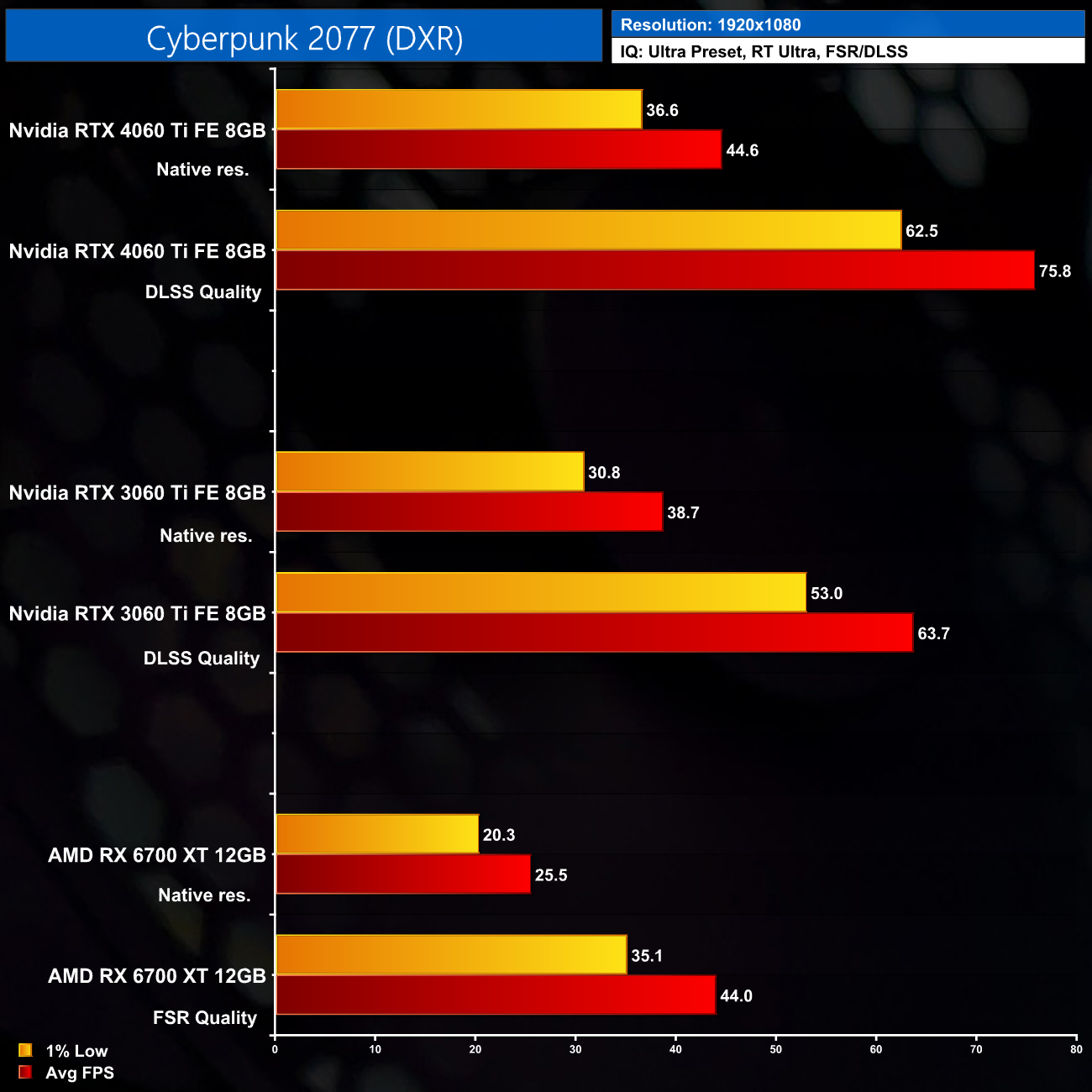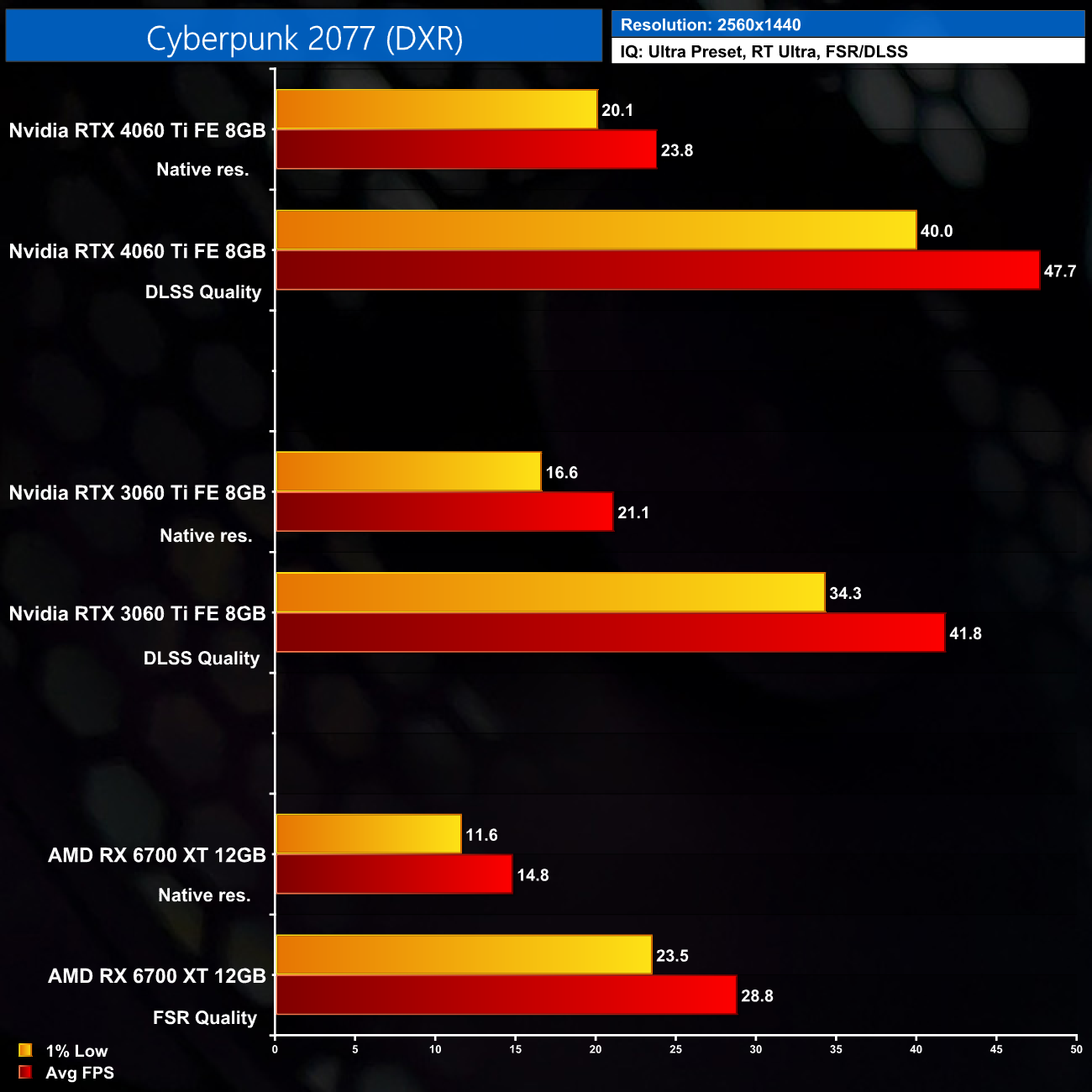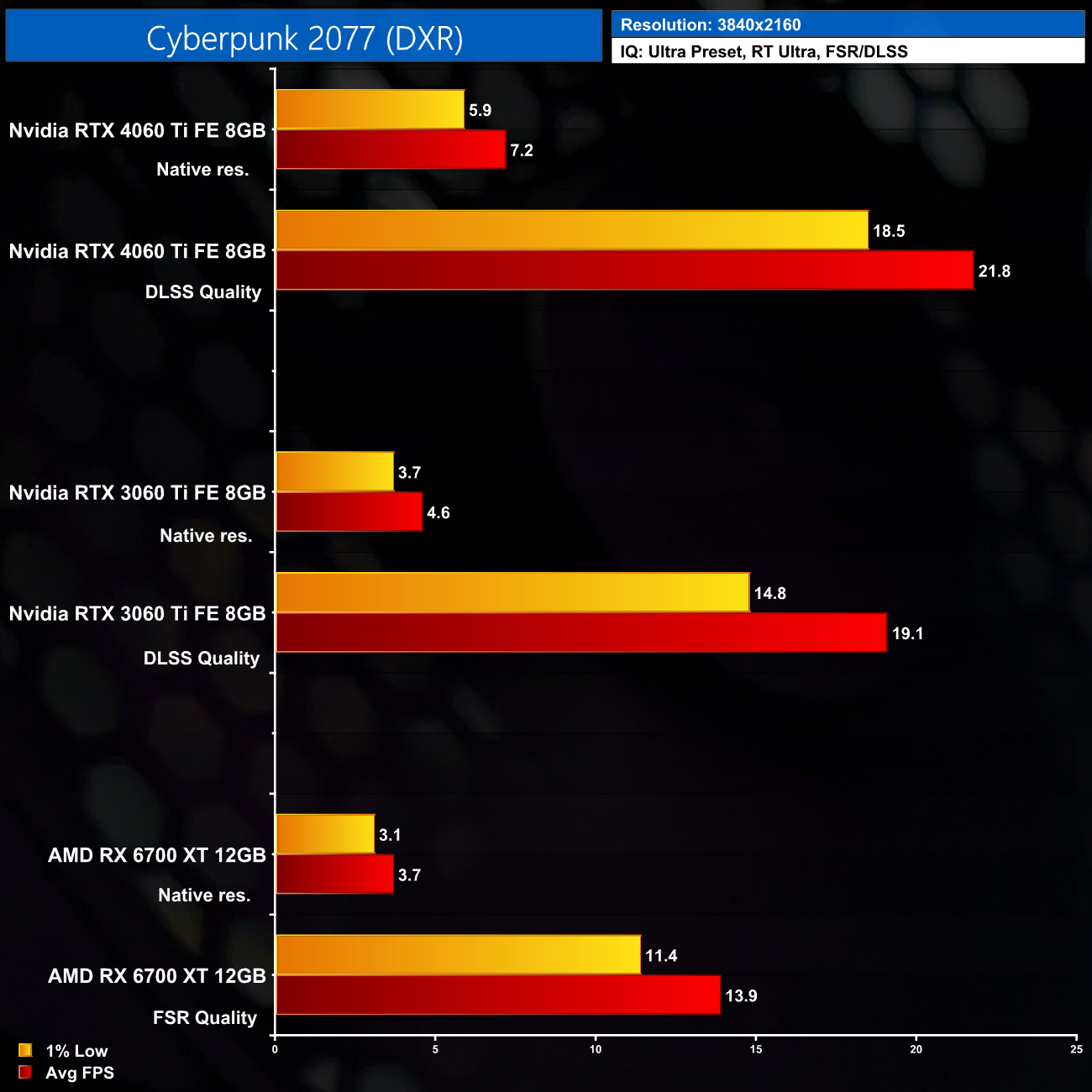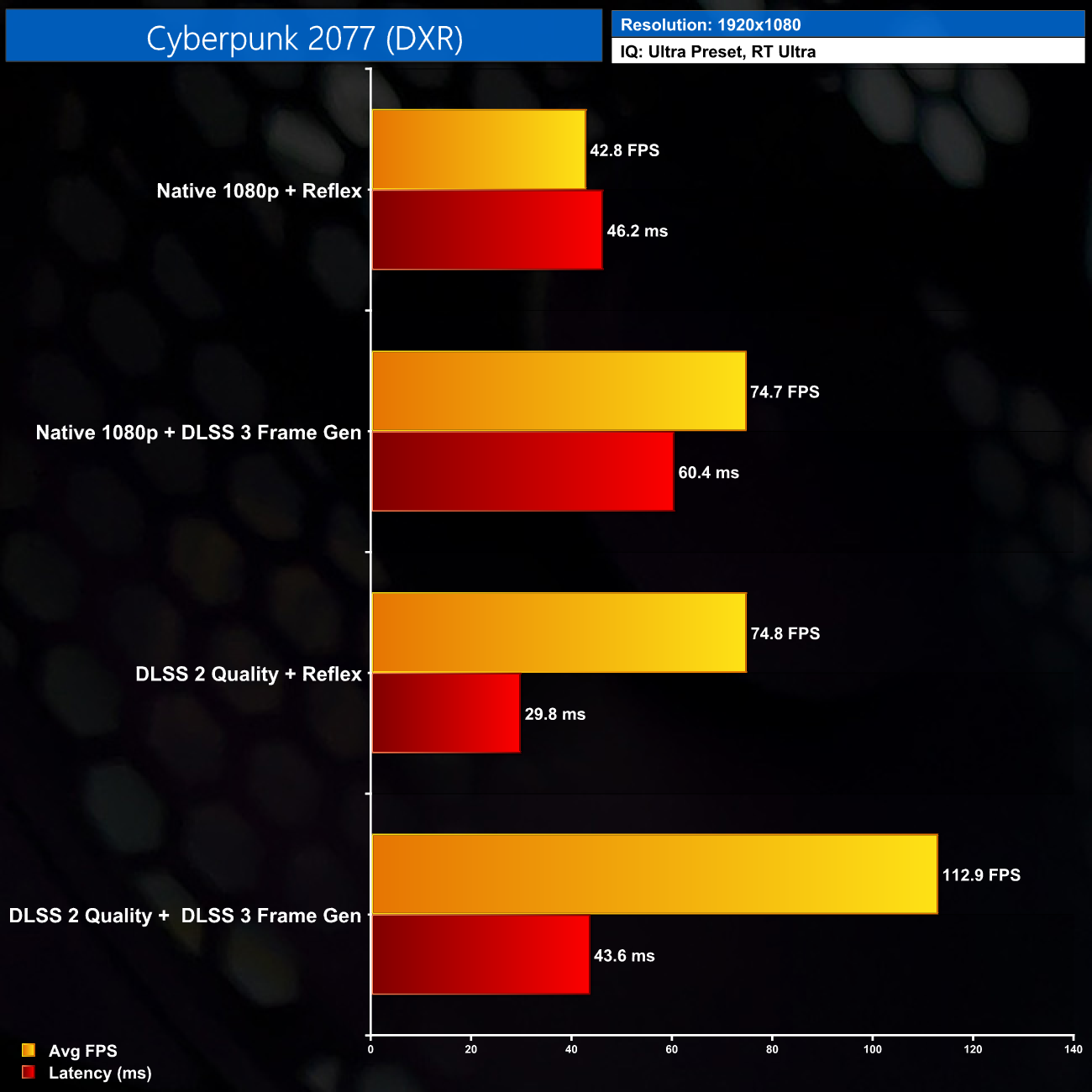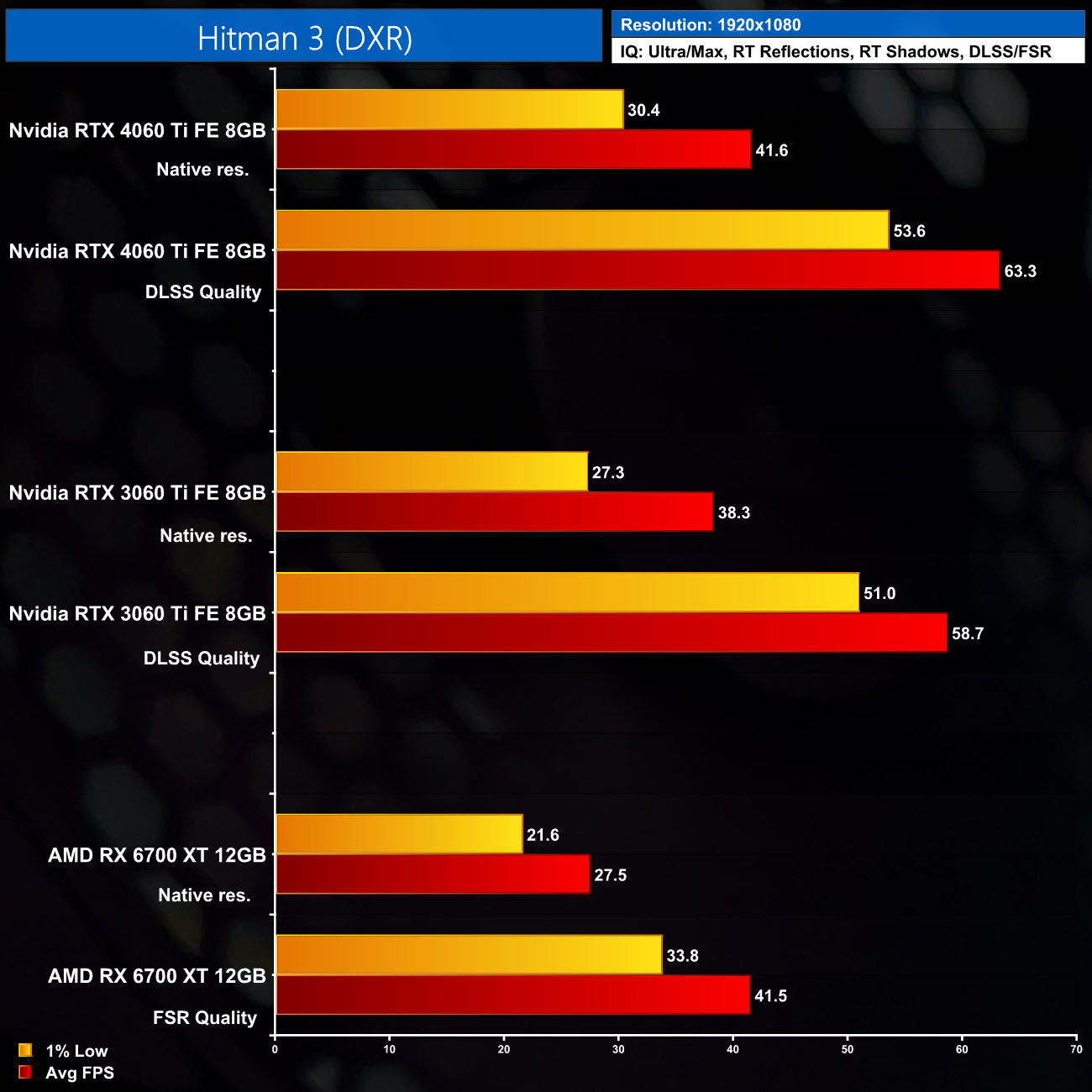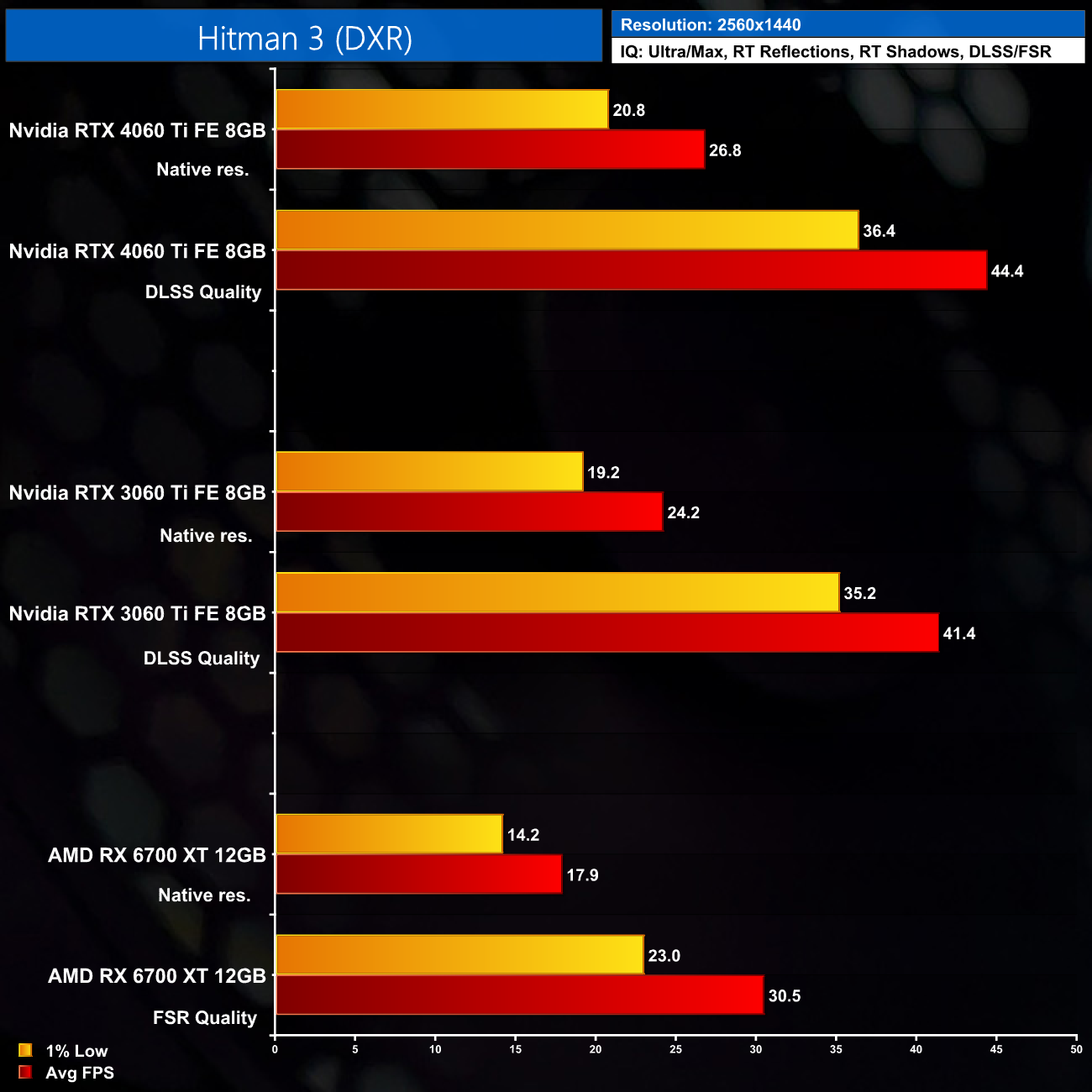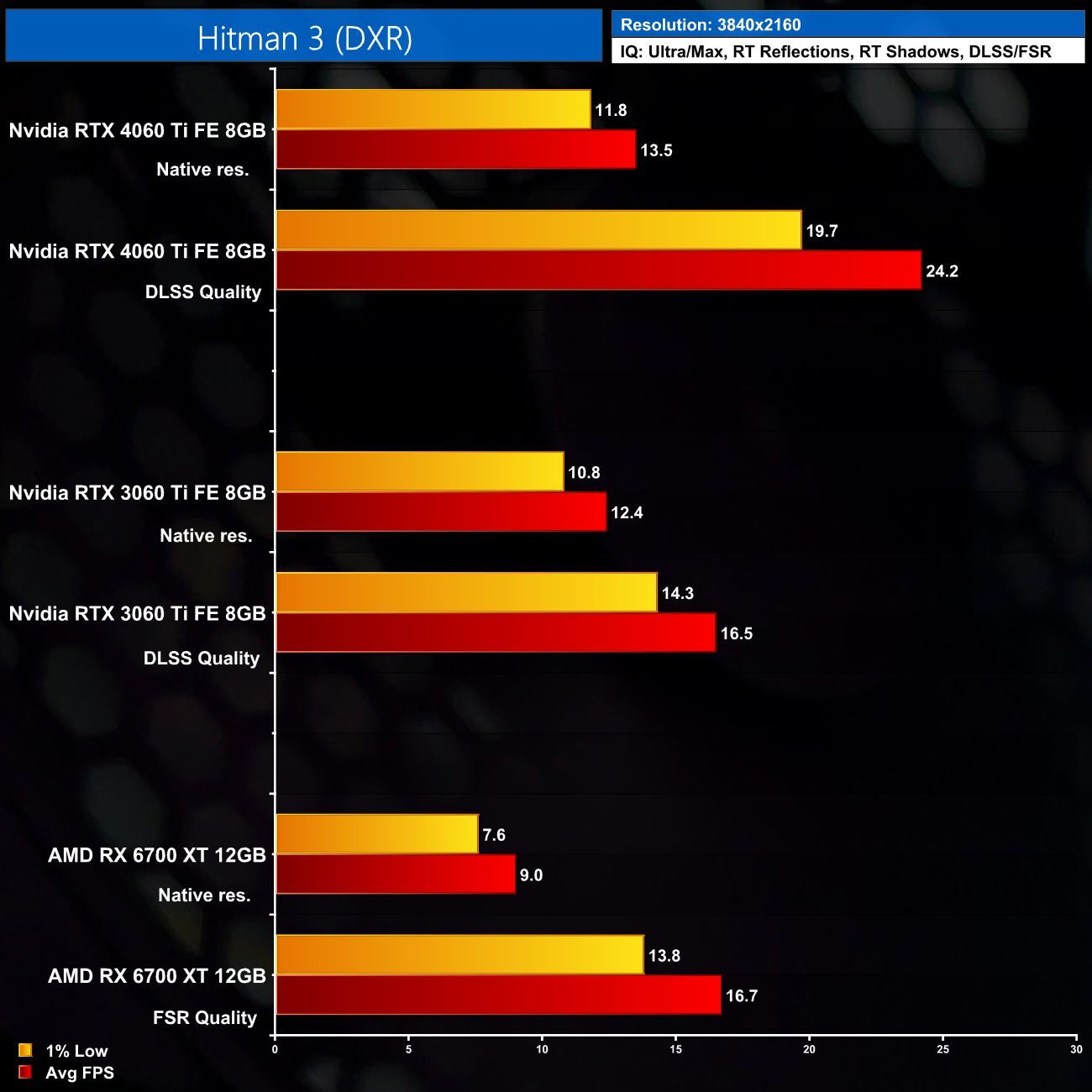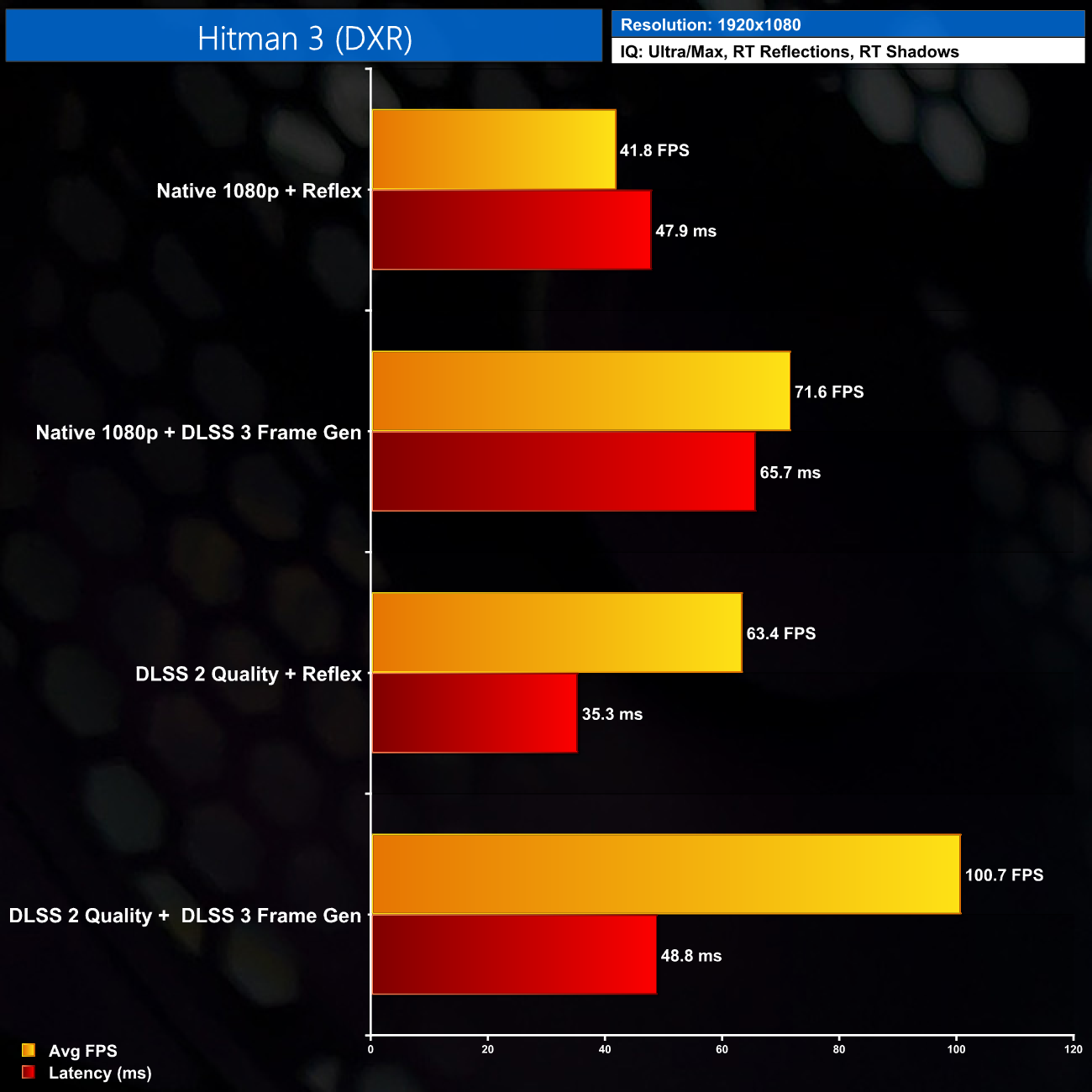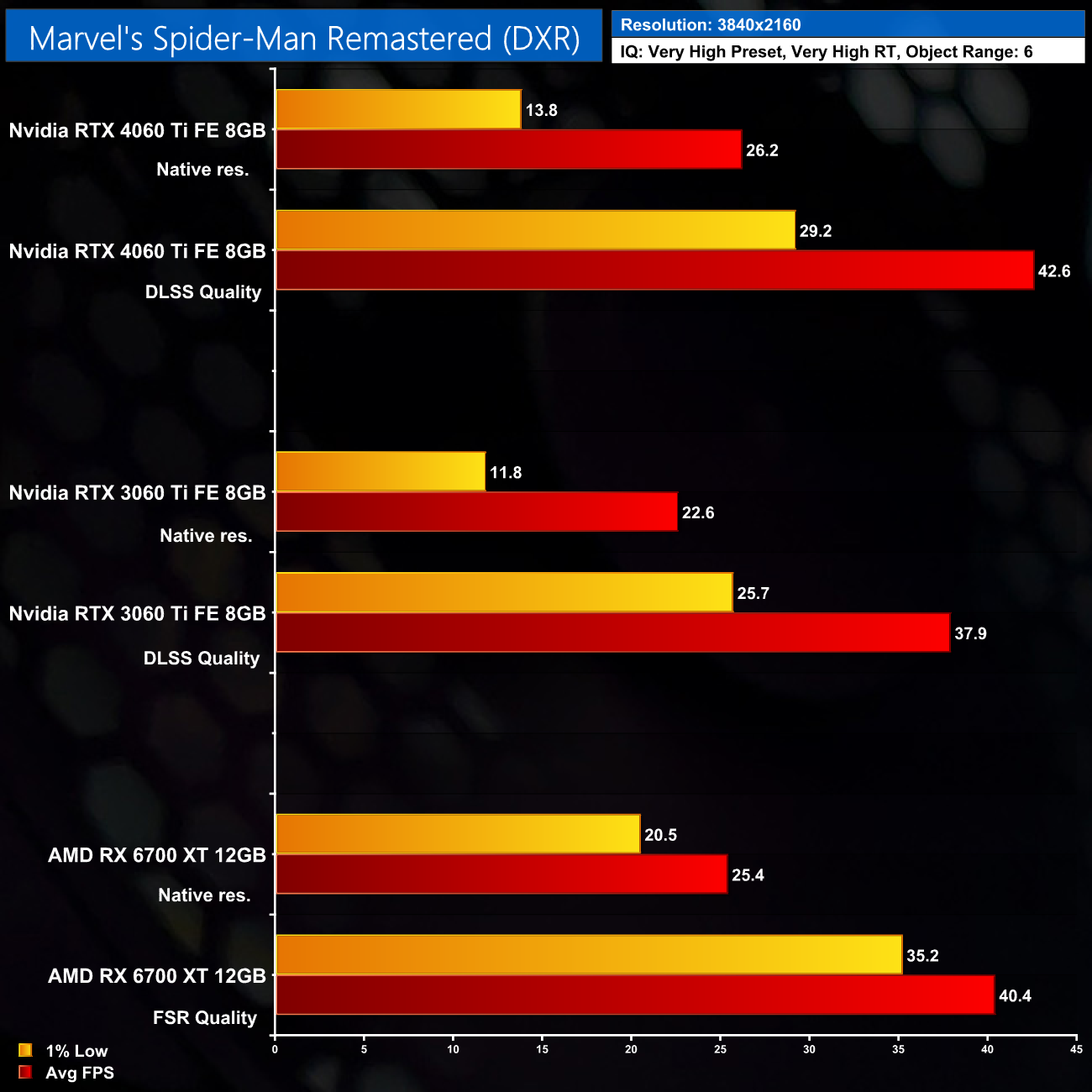Here we re-test three titles using both DLSS 2 and DLSS 3, to give you an idea of the performance on offer from Nvidia's upscaling technologies.
Cyberpunk is a great example of what can be achieved with DLSS 2 Super Resolution. At 1080p, the 4060 Ti gets a 70% boost to its average frame rate, taking it from 45FPS all the way up to 76FPS, while keeping the 1% lows above 60FPS too.
At 1440p, frame rates actually double using DLSS 2 Quality, up to just under 48FPS. It's not the highest frame rate, but with Ultra ray tracing enabled, it's a decent result.
Of course, we also test DLSS 3, enabling Frame Generation on its own, and in conjunction with DLSS 2 Super resolution. Frame Gen on its own offers almost identical frame rates to DLSS 2 Quality, albeit with higher latency. Enabling both together gets us over the 100FPS mark, with latency just a touch lower than native resolution.
Hitman 3 sees decent gains from DLSS 2 as well. At 1080p the RTX 4060 Ti benefits to the tune of 52%, taking frame rates well over 60FPS – though of course the same can be done for the RTX 3060 Ti, so the actual margin between the two is still minimal.
At 1440p DLSS 2 offered an even bigger performance boost, this time around 66%, which enabled the 4060 Ti to offer a more playable 44FPS. It's only 7% faster than the RTX 3060 Ti however, but let's see what DLSS 3 can bring to the table…
This time around, DLSS 3 Frame Generation is able to offer a higher frame rate than simply using DLSS 2 Quality, though the latency is almost double. The ideal situation would be using DLSS Super Resolution alongside Frame Generation, delivering 100FPS exactly, with latency almost identical to what we see at native resolution.
The gains from DLSS 2 are smaller in Spider-Man, possibly due to this game being more CPU heavy – we're only looking at a 27% uplift at 1080p for the 4060 Ti.
At 1440p, we're looking at a 40% gain instead which is more like it – but again the 1% lows are noticeably choppier than they were at 1080p.
If you do opt to play at 1080p, DLSS 3 Frame Generation gives a much bigger boost to performance than DLSS 2 Quality, offering a 58% boost to frame rates at the cost of 13ms extra latency versus native. With Frame Gen and Super Resolution used in tandem, frame rates nearly double versus native, with latency 6ms higher.
 KitGuru KitGuru.net – Tech News | Hardware News | Hardware Reviews | IOS | Mobile | Gaming | Graphics Cards
KitGuru KitGuru.net – Tech News | Hardware News | Hardware Reviews | IOS | Mobile | Gaming | Graphics Cards


